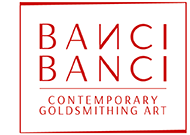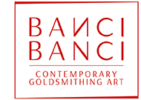Quello che segue è un estratto di una conversazione tra Daniela e Marzia Banci e Ornella Casazza curatrice della mostra “La tradizione nella modernità“
Ornella Casazza inizia la sua carriera nei laboratori di restauro dell’Opificio delle Pietre Dure – fondati da Umberto Baldini – nei quali è entrata, vincitrice di concorso nazionale, nel 1974 dopo un precedente apprendistato di sette anni.
Tra i suoi interventi di restauro più importanti ricordiamo: il Crocifisso di Cimabue, nella Basilica di Santa Croce, La Primavera di Botticelli, la Cappella Brancacci, nella chiesa del Carmine e il Trittico di San Giovenale di Masaccio.
Dopo la carriera nel campo del restauro, con concorso è passata alla carriera direttiva divenendo Direttrice del Museo Tesoro dei Granduchi di Palazzo Pitti a Firenze e insegnando nelle Università italiane e straniere.
Buona lettura!
L’arte del restauro come è entrata nella tua vita?
Ho iniziato la mia carriera ai laboratori di restauro dell’Opificio delle pietre dure, vincendo un concorso statale all’età di 24 anni. Pensavo di essere adatta a intervenire sulla conservazione delle opere d’arte e di tramandarle al futuro.Ero attratta a conoscerne i materiali costitutivi e l’immagine che li rappresentava e che io tanto amavo.
È dall’oro dei dipinti che è nata l’attenzione per l’oreficeria o dai gioielli dei dipinti?
I Laboratori erano colmi di capolavori, Cimabue, Giotto, Raffaello e Botticelli e Caravaggio li potevo avvicinare e toccare. I fondi oro risplendevano sotto le luci (infrarosse, ultraviolette) che servivano per analizzarli. Le strumentazioni adoperate dai chimici e dai fisici erano sofisticate e d’avanguardia. Sembrava di collaborare in una Stazione spaziale.
L’oreficeria la intendi un’arta applicata?
I fondi oro sono veri e propri gioielli, anche se spesso di grandi dimensioni. La foglia dell’oro applicata in antico e i fondi blu lapislazzuli rappresentano veramente il cielo. Un dipinto che ho restaurato è il Crocifisso di Cimabue che si distingue proprio per questi due materiali preziosi. La primavera del Botticelli è l’esempio di un’artista che ha adornato le sue Grazie con gioielli che ancora oggi il mondo ammira.
Quanto vale oggi l’arte orafa nel mondo dell’arte?
L’oreficeria non è un’arte minore, equivale per i materiali e per la sapiente realizzazione a un’opera d’arte vera e propria che solo i veri e grandi orafi conoscono e sanno farla apprezzare anche a chi non ha molta confidenza con questo tipo di arte che non si apprende soltanto a scuola, ma solo chi ha la ‘grazia divina’ sa come esprimerla.
Quando il gioiello contemporaneo mostra i connotati per entrare a far parte della collezione museale?
Nella contemporaneità molti grandi artisti: scultori, pittori, architetti si sono dedicati all’arte orafa e non perché l’hanno appresa a scuola, ma perché hanno sentito la necessità di esprimersi anche nel piccolo formato con l’impegno e la serietà che trasmettono nelle opere maggiori. I risultati sono stati sempre molto apprezzati perché le loro opere uscivano dalle mani di chi conosceva perfettamente il mestiere, l’arte antica e la modernità. Molte delle loro opere sono entrate senza ombra di dubbio a far parte delle collezioni museali. Così le opere di Daniela e di Marzia Banci appartengono alle collezioni del Tesoro dei Granduchi di Palazzo Pitti.
Quale museo per il gioiello contemporaneo vorrebbe inaugura Ornella Casazza?
Ci auguriamo che molti musei, o addirittura un museo specifico, si aprano a questa disciplina così attraente e preziosa perché entri a tutti gli effetti nel patrimonio culturale italiano.



